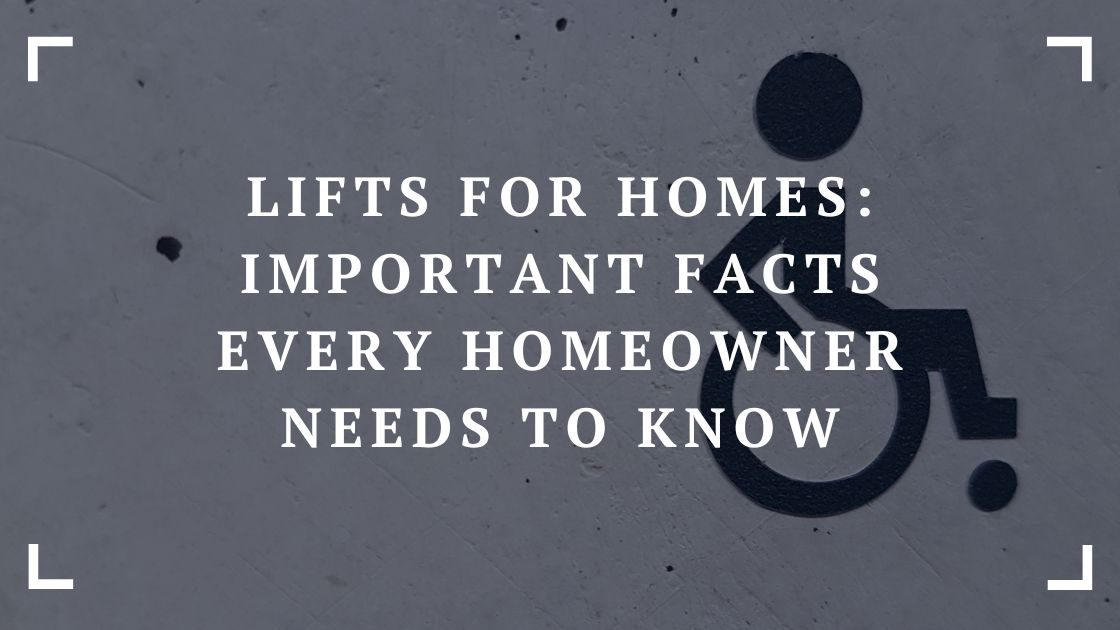In recent years, the concept of home lifts has gained significant traction among homeowners. Once considered a luxury reserved for the affluent, home lifts are now becoming more accessible and practical for a wider range of individuals. As technology advances and the population ages, the demand for home lifts continues to grow. In this blog post, we will explore the important facts every homeowner needs to know about lifts for homes, including their benefits, types, installation process, maintenance, and cost considerations.

Enhancing Accessibility and Independence
Having a residential wheelchair lift can significantly enhance accessibility and convenience for individuals with mobility challenges. These lifts provide a safe and reliable way for wheelchair users to navigate between different levels of their homes, eliminating the need for strenuous transfers or reliance on stairs. With a residential wheelchair lift, individuals can maintain their independence and quality of life, as they can move freely throughout their living spaces without barriers. These lifts are designed with user safety in mind, featuring sturdy construction, smooth operation, and advanced safety features such as emergency brakes and sensors. Overall, a residential wheelchair lift can make a meaningful difference in the daily lives of those who rely on mobility aids, offering greater freedom and autonomy within their homes.
Benefits of Home Lifts
The primary benefit of installing a lift in your home is improved accessibility. Home lifts provide a convenient and safe way for individuals with mobility issues, elderly family members, or those with disabilities to move between floors. This accessibility not only enhances the quality of life for residents but also adds value to the property. Moreover, home lifts can also be a stylish and modern addition to your home, contributing to its overall aesthetic appeal.
Types of Home Lifts
There are several types of home lifts available on the market, each designed to suit different needs and space requirements. Some of the most common types include:
Hydraulic Home Lifts: These lifts use hydraulic fluid and a piston to move the lift car between floors. They are known for their smooth and quiet operation, making them ideal for residential settings.
Traction Home Lifts: Traction lifts operate using steel ropes or belts attached to an electric motor. They are more energy-efficient than hydraulic lifts and are often chosen for taller buildings or homes with higher traffic.
Platform Lifts: Platform lifts are designed for wheelchair users or individuals with limited mobility. They feature a platform that moves vertically between floors, providing easy access without the need for stairs.
Through-Floor Lifts: Through-floor lifts are installed directly into the floor, allowing seamless movement between levels. They are compact and can be discreetly integrated into your home’s design.
Installation Process
The installation process for a home lift typically involves several steps. First, a site assessment is conducted to determine the best location for the lift and to assess any structural requirements. Next, the lift is custom-designed to fit the space and specifications of your home. The installation itself can vary in complexity depending on the type of lift chosen and the existing layout of the property. However, professional installation teams ensure that the process is smooth and efficient, with minimal disruption to your daily life.
Maintenance and Safety
Like any mechanical system, home lifts require regular maintenance to ensure optimal performance and safety. Most manufacturers recommend scheduling routine inspections and servicing to check for any potential issues and to keep the lift in good working condition. Additionally, modern home lifts come equipped with advanced safety features such as emergency brakes, backup power systems, and sensors to detect obstructions or malfunctions. These safety measures are crucial in providing peace of mind to homeowners and ensuring the well-being of all users.
Cost Considerations
The cost of installing a home lift can vary widely depending on factors such as the type of lift, the size of the lift, the complexity of the installation, and any additional features or customization options. Hydraulic lifts tend to be more expensive upfront due to their construction and installation requirements, while traction lifts may have lower initial costs but higher long-term maintenance expenses. Platform lifts and through-floor lifts are generally more affordable options for homeowners looking to improve accessibility within their homes.
Homeowners need to consider not only the initial investment but also the long-term benefits and savings associated with a home lift. Increased property value, improved accessibility, and enhanced quality of life are all valuable returns on investment that should be taken into account when evaluating the cost of a home lift.

In conclusion, lifts for homes offer a range of benefits and solutions for homeowners looking to improve accessibility, convenience, and safety within their living spaces. By understanding the different types of lifts available, the installation process, maintenance requirements, safety features, and cost considerations, homeowners can make informed decisions about integrating a home lift into their properties. Whether it’s for aging in place, accommodating family members with mobility challenges, or simply adding a touch of luxury, home lifts are a valuable addition to modern residential living.


